Desert plants are well known to be less demanding; due to their adaptability to extremely harsh conditions in their native environment.
If you live in a dry region or a location with an arid-like climatic condition then the below-listed desert plants with thrive in your garden but also indoors you can grow these plants.
From their striking and intriguing appeal, adjustment to any environment to low-maintenance requirements; makes desert flora a befitting choice for your garden and also indoors. If you fancy the idea of bringing the desert feel and character to your space; then you are in for a treat with growing the below desert plants.
The following 10 most popular desert plants should be at the top of your list as you embark on a desert plant-growing journey;
- Barrel cactus (Echinocactus grusonii)
- Desert Palm (Washingtonia filifera)
- Mother of Pearl Plant (Graptopetalum paraguayense)
- Pancake Prickly Pear (Opuntia chlorotica)
- Joshua Tree (Yucca brevifolia)
- Zebra Cactus (Haworthia fasciata)
- Soaptree Yucca (Yucca elata)
- Elephant Tree (Bursera microphylla)
- Saguaro cactus (Carnegiea gigantea)
- Panda Plant (Kalanchoe tomentosa)
5 Bonus popular desert plants, widely grown as houseplants also listed below;
- Desert Rose (Adenium obesum)
- Aloe Vera (Aloe barbadensis Miller)
- Jade Plant (Crassula ovata)
- Oleander (Nerium oleander)
- Bottlebrush (Callistemon)
Desert Plants and their Adaptation Techniques
Wandering how desert plants manage to survive amid the acute dry seasons experienced in the desert? Here are some interesting facts on how desert plants have managed to navigate the dry conditions and even grow to maturity and bloom eventually. Due to their succulent adaptations, they can store water in their leaves, stems or roots extensively. Desert plants have fewer leaves if any exist but most have reduced leaf area surface like the spines or needles to reduce water loss through transpiration. Often cactus are found in the desert, you can read about the 10 best indoor cactus varieties here.
A deep rooting system is among the key traits of desert plants, this adaptation technique allows them to survive extremely dry conditions. A deeper rooting system gives desert plants the power to access deeper water reserves and maximum the occasional rain experienced in the deserts. Cuticle is a waxy coating found on the leaves and stems of desert plants, due to excessively high temperatures evaporation can be really high. Cuticle helps prevent plants from experiencing high evaporation rates.
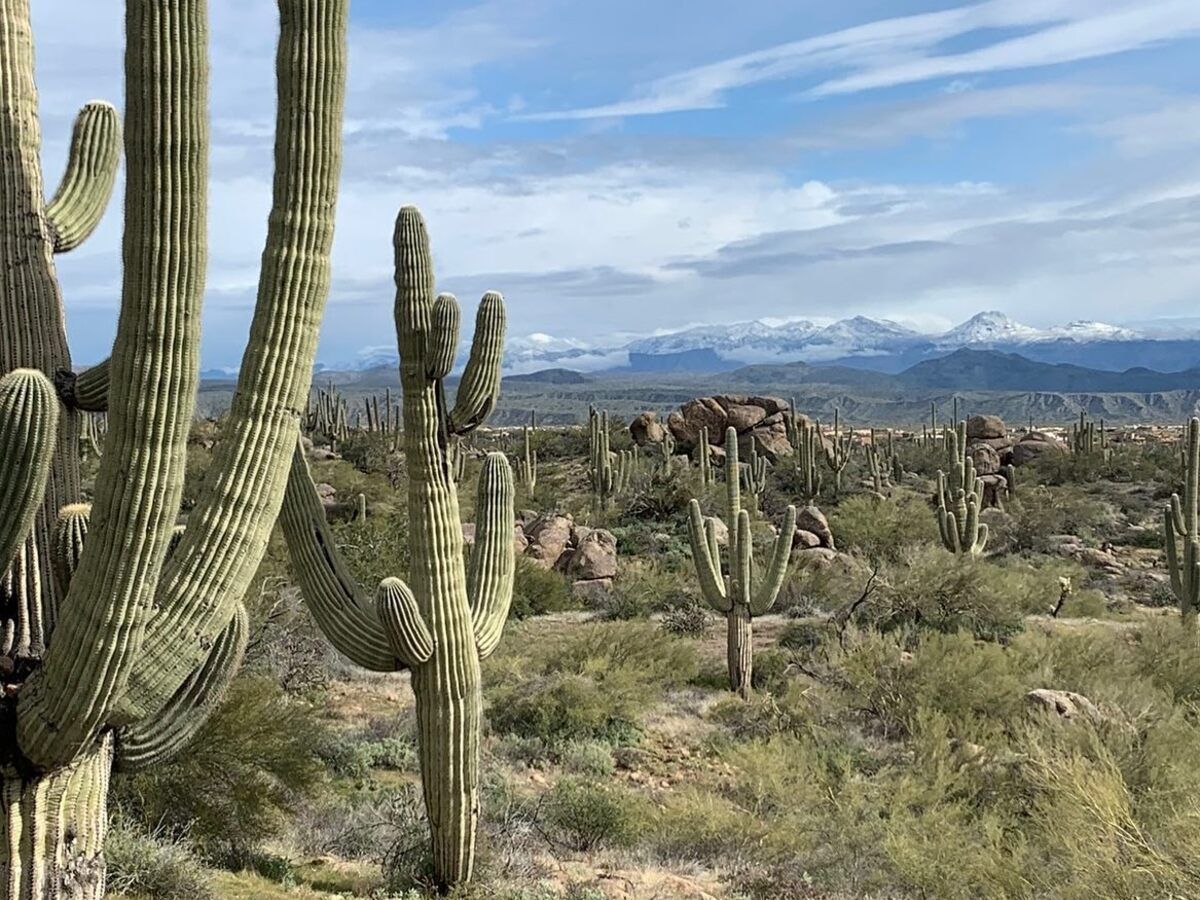
Additional survival techniques include; strategic and short flowering periods, especially during the rainy seasons or maybe due to a trigger of pollinators to avoid exhaustive use of energy and less-available water.
Adoption of Desert Plants into Indoor Gardening
Desert plants have been adopted gradually into home gardening; a specific period cannot be established exactly regarding when desert plants gained entry into home gardening, whether indoor or outdoor. However, increased awareness about desert plant care requirements and continuous innovation in gardening; has contributed immensely to the popularity of desert plants and other dought-resistant ornamentals in outdoor and indoor gardening.
Furthermore, the adaptation techniques and resilience of desert plants give plant lovers the opportunity to add elegance and texture to their homes and offices.
Below is a list of 10 intriguing and yet popular desert plants which you can adopt in your garden, or even inside your room. However, there is also a list of 5 extra plants popularly grown as houseplants already but with desert-like growing traits and care needs.
Barrel Cactus (Echinocactus grusonii)
The Barrel Cactus is definitely one of the most well-known desert plants to keep in your home. It is a striking desert plant with a barrel-shaped succulent covered in rigid spines. Its unique shape and spines make it a beautiful addition to any indoor space.
Due to its barrel-shaped growth, the name came about; but another common name is Golden Barrel cactus.

Echinocactus require bright and direct sunlight but less watering, in fact, allow the potting mix to completely dry before watering. Grow Barrel Cactus near your window, which has sufficient access to bright sunlight during the day.
Zebra Cactus (Haworthia fasciata)
Zebra Haworthia from its word ‘Zebra’ has white zebra-like stripes and spiky leaves. Mount this alluring desert plant near a window, to access a few hours of light daily, and allow the soil to dry out before watering.
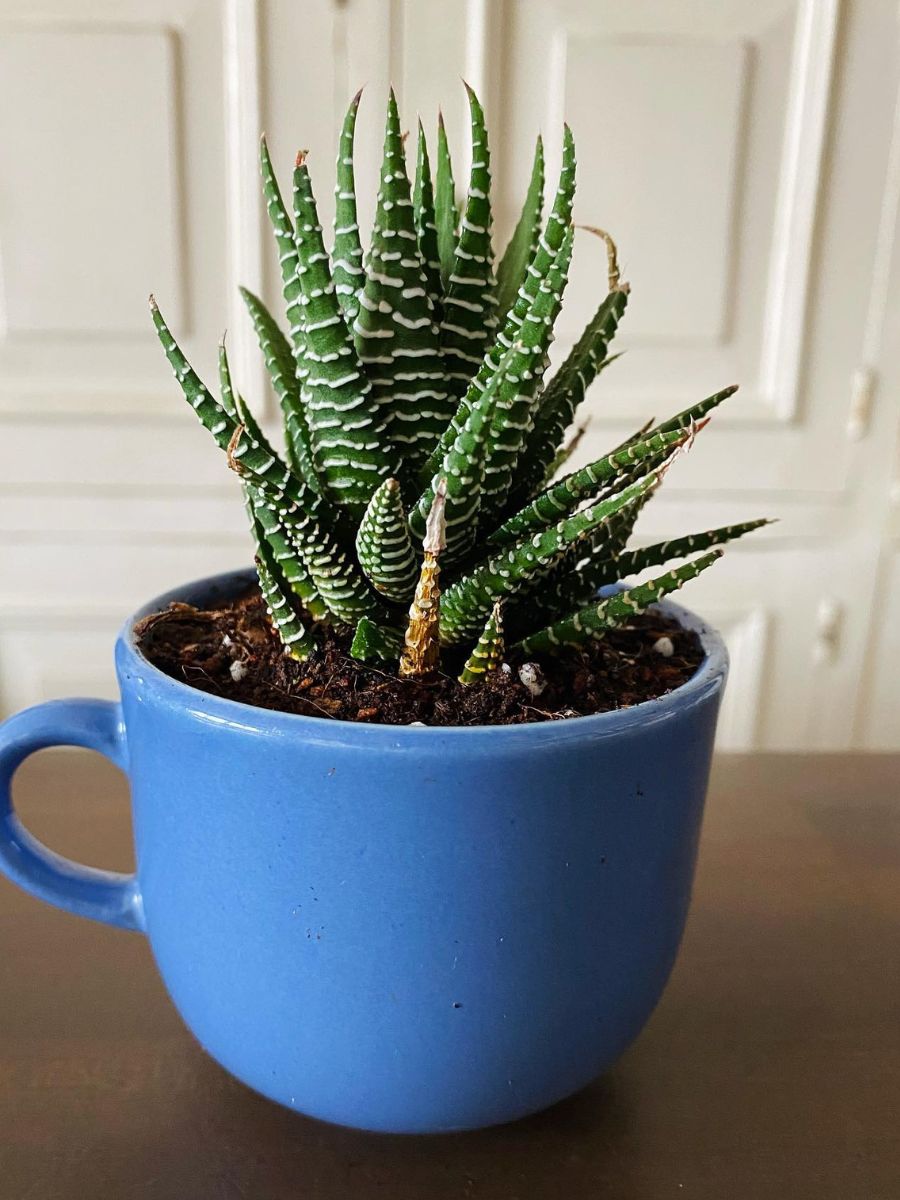
Grow Zebra Haworthia alongside other succulents because do not have to worry about length or outgrowing because the maximum height for this plant average at 4-6 inches.
Desert Palm (Washingtonia filifera)
Palm trees are well-known to thrive at the beachside, but did you know these beachside staples can also grow in desert regions? Desert palms differ significantly from the normal fans, when their fronds die, they fold around the trunk, giving the desert palm a strong protection layer.
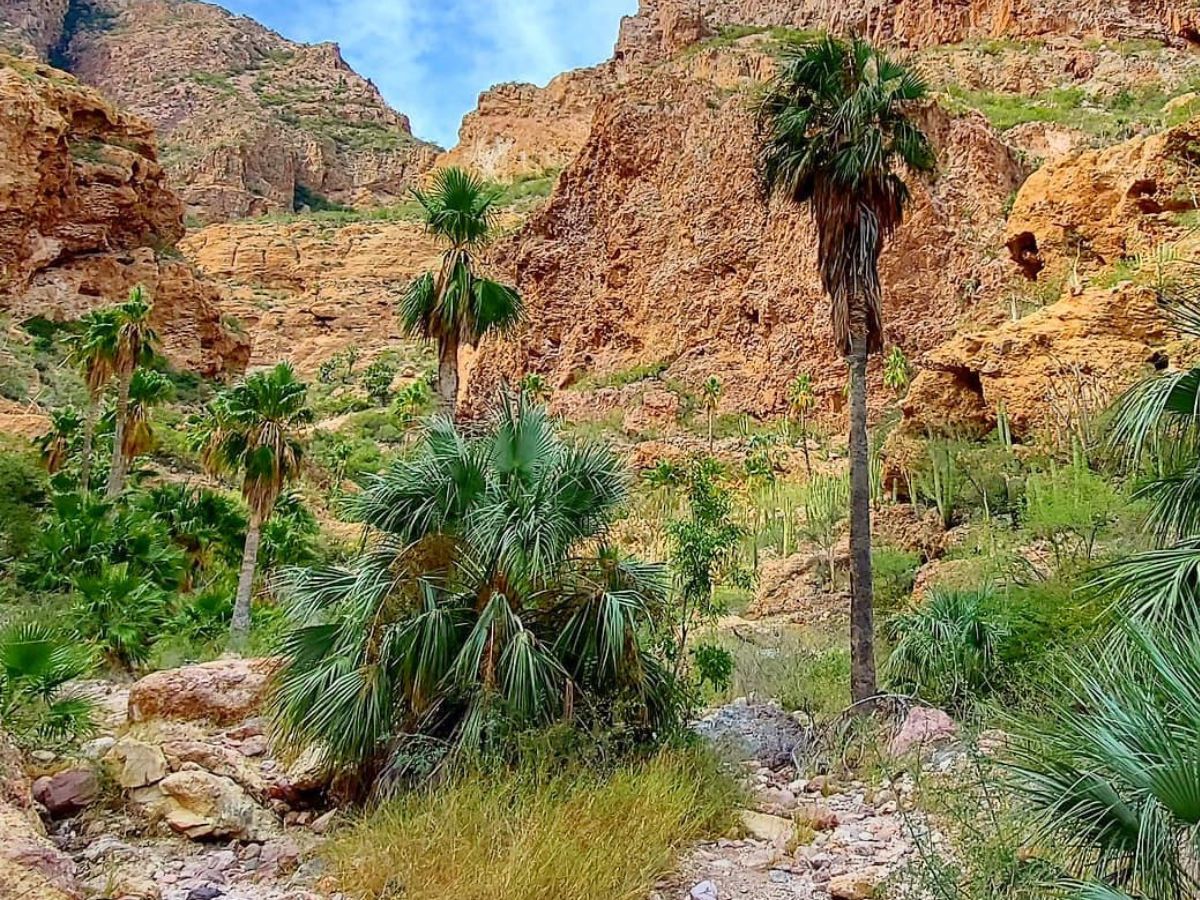
Desert palm is a hardy desert plant, able to tolerate intense sun exposure, low humidity, and inconsistent night temperatures. The following desert palm varieties are suitable for growing in hot and dry conditions; Acrocromia species, Bismarck palm tree, Cuban paddle palm tree, and Ravenea Xerophila.
Joshua Tree (Yucca brevifolia)
Native to Arizona, Utah, California, and Nevada, the Joshua tree grows to an impressive height of 15m but after so many years. Joshua tree can also be referred to as; yucca palm, and palm tree yucca. Thanks to its strong rooting system Joshua tree is able to thrive in arid conditions by tapping into deep water tables.
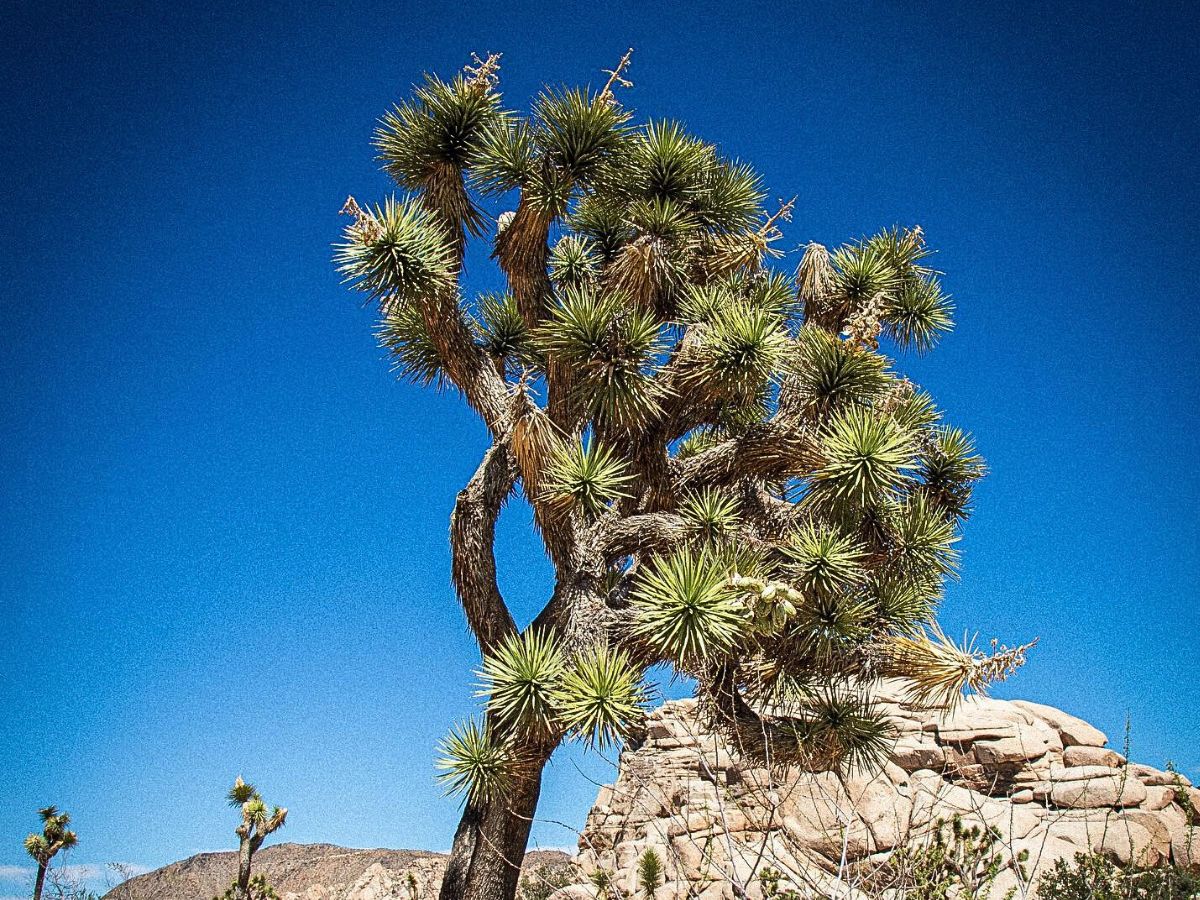
The green leaves which grow at the end of its short and stunted branches; give the tree a barren look but make it easy to identify it from a distance. An interesting fact about Joshua Tree is that it has a lifespan of 200 years!
Soaptree Yucca (Yucca elata)
Soaptree Yucca is a hardy desert plant that can withstand a mix of cold and hot weather. However, Yucca elata fancies the sun a lot and that is why it grows so well as a desert plant.
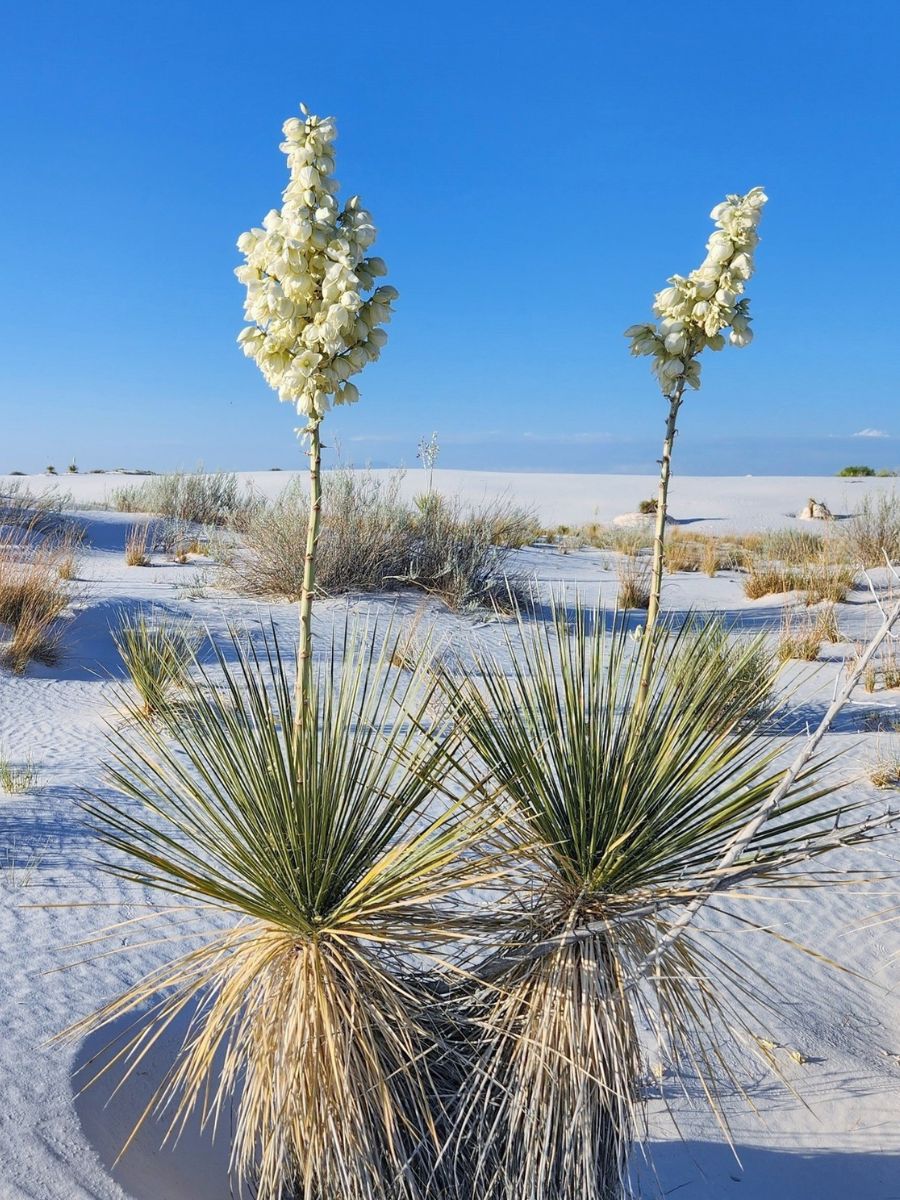
Sonora and Chihuahua deserts are the most common places to find this desert plant. Notably, Soaptree yucca is a 10-18 feet tall desert plant with leaves growing at its base.
Mother of Pearl Plant (Graptopetalum paraguayense)
Mother of pearl plant also formerly known as the ghost plant, is a succulent desert plant that is suitable for both, cold hot and dry climatic conditions.
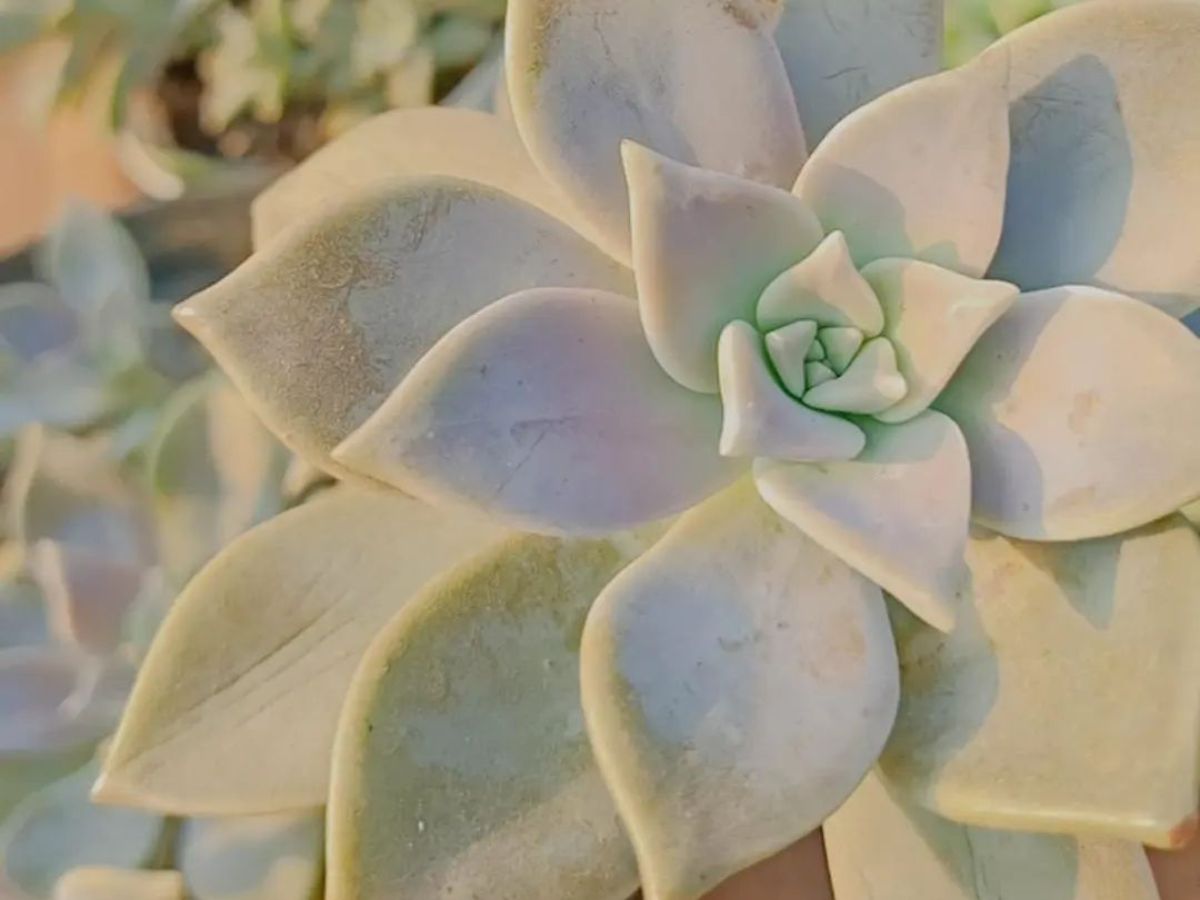
This elegant ground-covering desert plant is originally from Mexico; as it grows the leaves create a rosette shape. The intriguing shape created by the porcelain succulent adds character to the plant. Another common name for the Mother of Pearl plant is sedum weinbergii.
Panda Plant (Kalanchoe tomentosa)
The panda plant is an appealing succulent with fuzzy, grey-green foliage with red-brownish tips. It can grow to 2 feet tall when grown indoors, but it takes a longer period to achieve such a height.
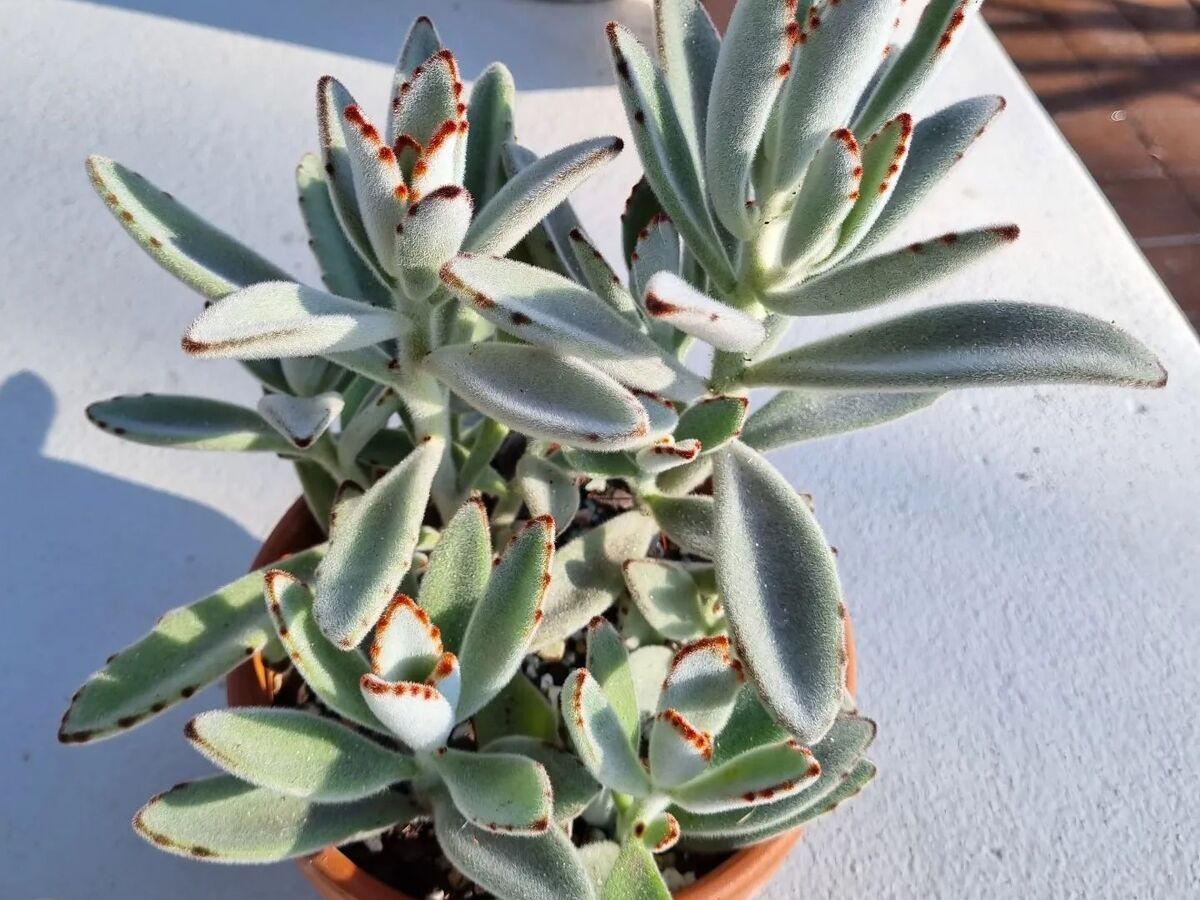
When watering, give it minimal water, allowing it to dry before resuming the watering. However, be careful not to drop some water on the leaves because it can easily contribute to rotting.
Prickly Pear (Opuntia chlorotica)
The prickly pear cactus is one of the most popular or iconic desert plants with green succulent and spiky leaves. Prickly pear cactus through its thick and greenish succulent leaves, store enough water to survive the harsh desert conditions.
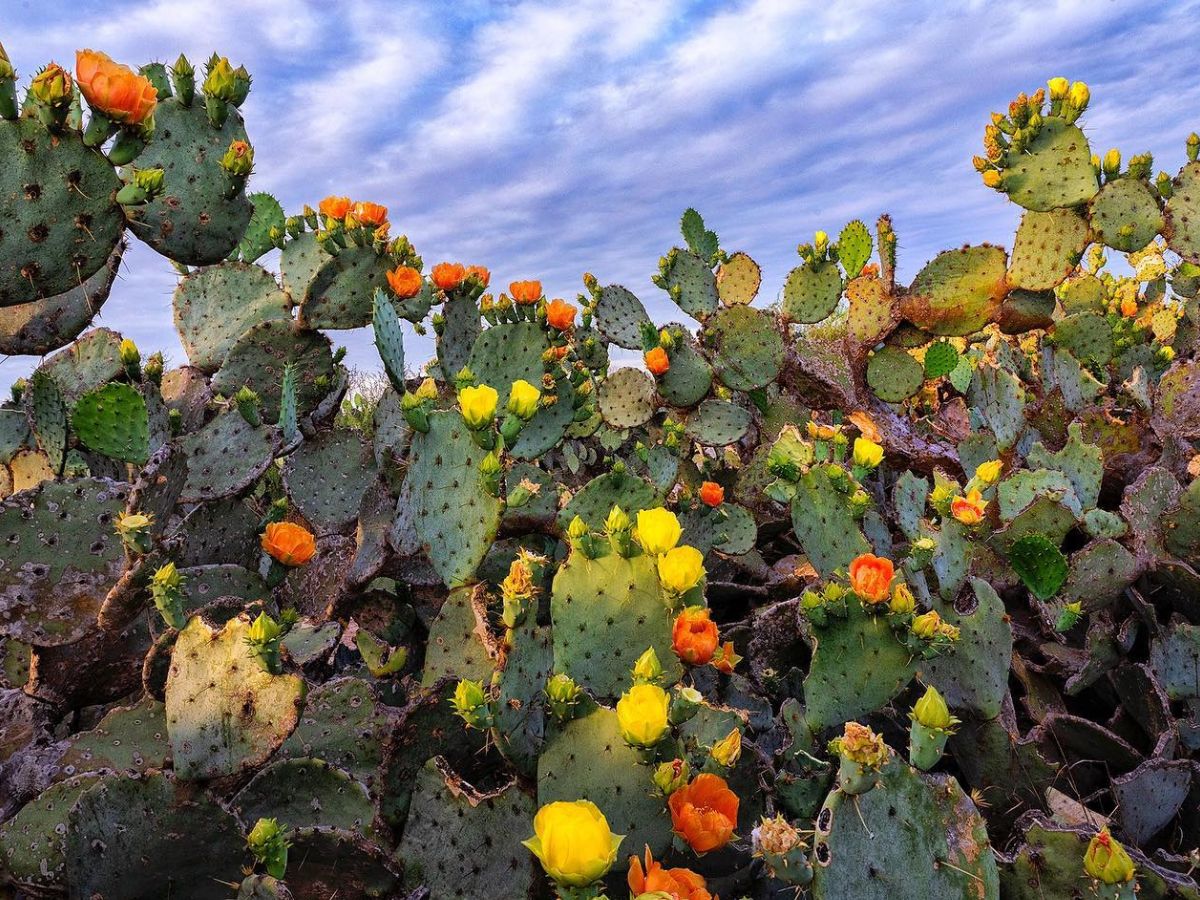
Due to its hardy personality, prickly pear just like other desert plants highlighted above can thrive even in your home garden, with less watering and sufficient exposure to sunlight.
The prickly pear cactus earned the name ‘Pancake Prickly Pear cactus’ because of its pancake-like arm which can grow to 7 feet tall.
Elephant Tree (Bursera microphylla)
Elephant trees can be grown as desert plants due to their easily recognizable huge trunk, used for water storage. The elephant tree is relatively short, with equally small branches.
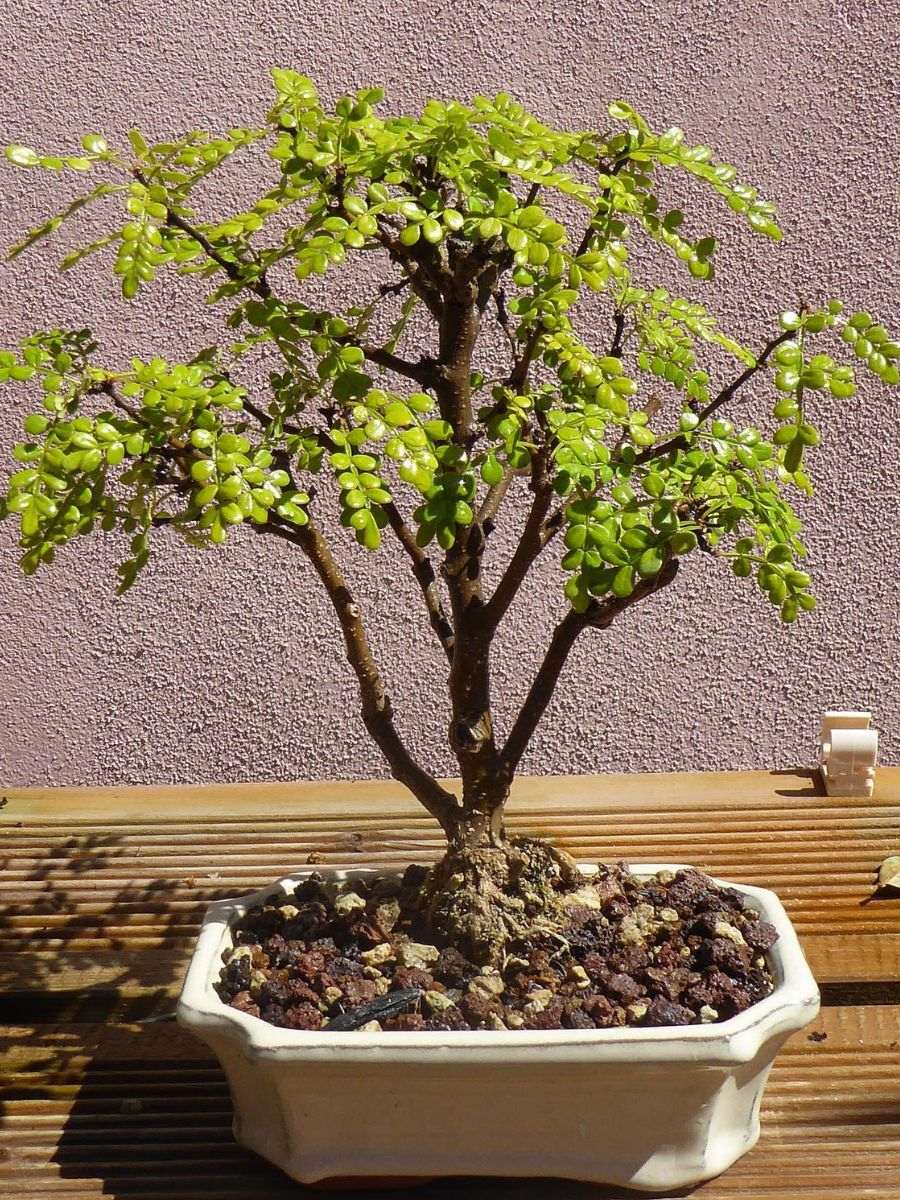
Provision of the sunlight exposure and water infrequently, allows the elephant tree to bloom with yellow flowers, which fade to white or cream in color when fully opened.
Saguaro cactus (Carnegiea gigantea)
The Saguaro cactus is a huge cactus; with large and stretching-out arms like branches. Carnegiea gigantea through its thick stems, stores enough water, enabling this huge desert plant to survive the driest of conditions in the desert. The saguaro cactus is a blooming plant, between April and June, its trumpet-shaped flowers emerge.
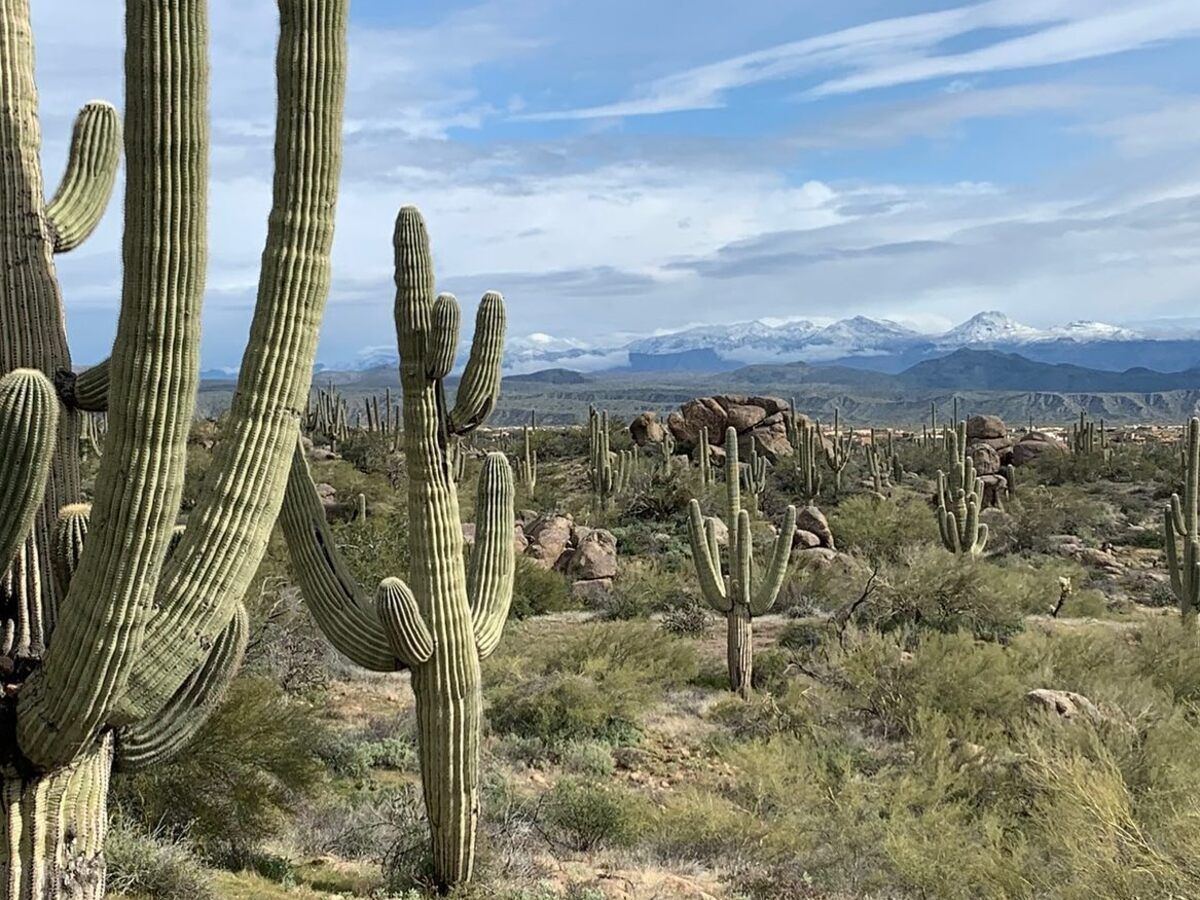
However, being a slow-grower, it makes it ideal for growing in your home garden, to add a touch of a desert feel to your environment.
The below additional plants have a desert origin but also desert-like growing traits. Due to their hardy nature, they have been massively adopted and grown in home gardens and also as houseplants.
Aloe Vera
Aloe Vera is popularly known and has been grown for its medicinal benefits for centuries. However, this versatile indoor desert plant is succulent with fleshy and thorny leaves and the easiest to grow, even for beginner growers.
.jpg?1687882010893)
Its sap which can be extra inside the leaves can be used to alleviate sunburns and treat wounds. Aloe Vera requires bright sunlight and minimal watering, avoid hot sun because it can scorch the leaves eventually.
Desert Rose (Adenium obesum)
Due to its slow growth, desert rose plants can grow up to 12 inches annually. Native to Africa and the Middle East, the Desert Rose plant can be planted as a bonsai plant due to its succulent stem and its thin leaves, with trumpet-like blooms.
.jpg?1687883514962)
Due to its trumpet-shaped pinkish flowers, Desert Rose stands to be the focal point of your indoor space. Growing this beautiful desert plant is easy, though it demands bright sunlight, allowing the soil to dry out before watering because it does not appreciate a lot of water.
Jade Plant (Crassula ovata)
Being the most popular succulent and indoor desert plant; the Jade plant is a symbol of good luck and success in different cultures. Jade plant has thick and glossy foliage, with also a tree-like appearance. Generally, Jade plants are not tall but when grown indoors can reach a foot in height.
.jpg?1687882999941)
Keep your Jade plants happy by allowing the soil to completely dry out before watering, also give your Jade plant an opportunity to access bright light regularly.
Oleander (Nerium oleander)
Oleander is a shrub that can be grown both in home gardens and also in the desert regions. Nerium oleander has medicinal value and it can be used to treat cardiac, and asthma illnesses, and also in wound healing as an antibacterial. Oleander seeds and leaves are used in manufacturing medicine.
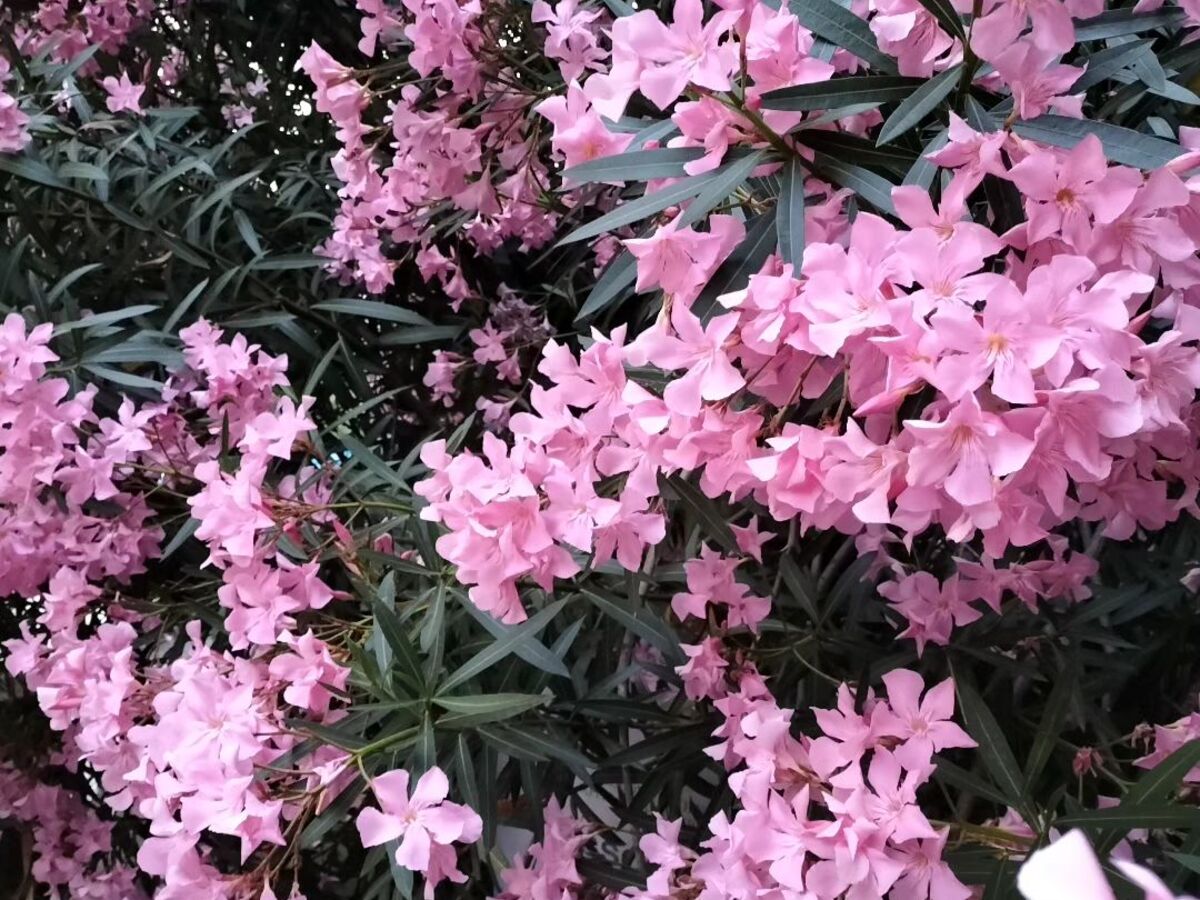
However, despite being a blooming shrub with attractive pinkish flowers, avoid direct skin contact with the oleander plant because of its irritation. Avoid excessive watering when dealing with oleander planted in your garden and also enhance it has access to enough sunlight throughout the day for it to thrive and eventually bloom.
Bottlebrush (Callistemon)
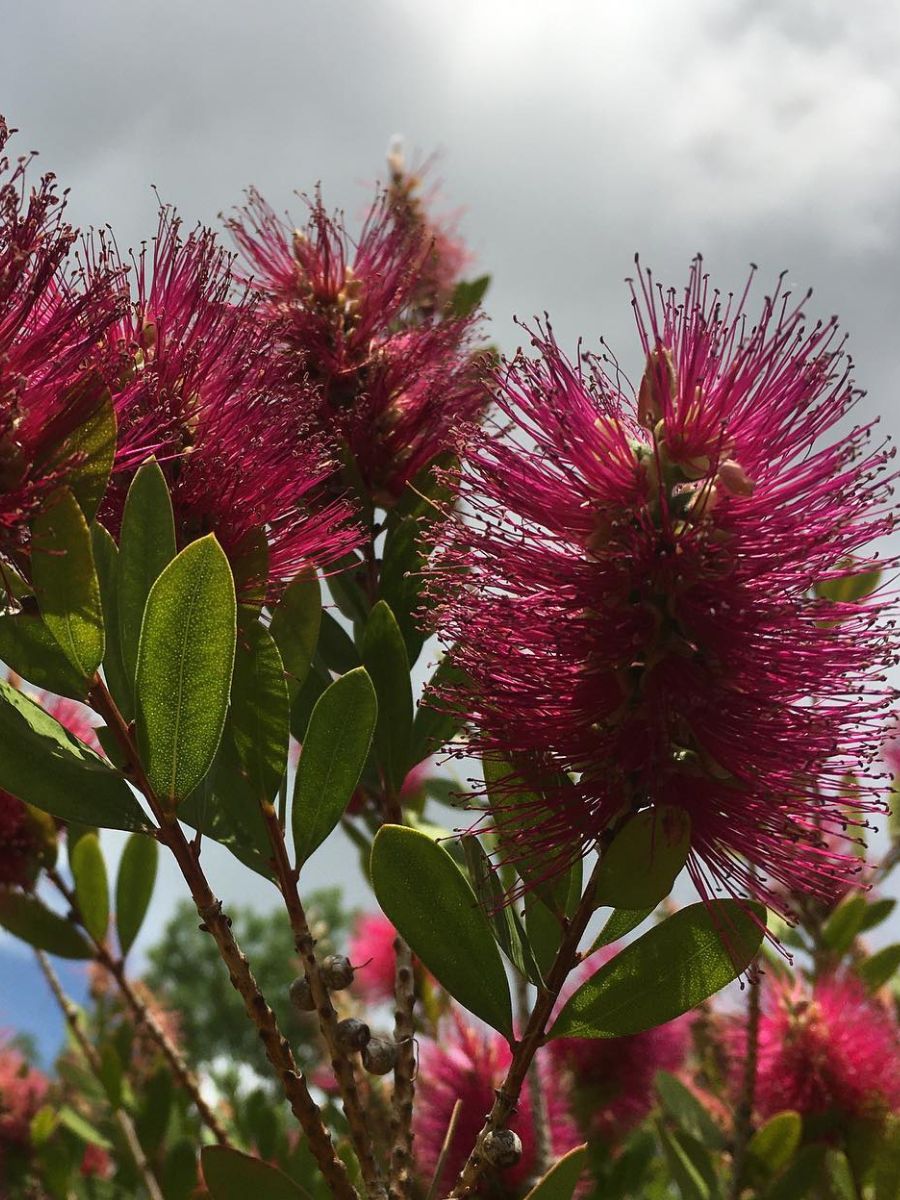
Bottlebrush in a hot desert climatic region, with minimal watering this desert plant can thrive to its blooming stage. Callistemon is known as the bottlebrush due to its red flowers, which grow in a bottle-like shape. Native to Australia, bottlebrush grows in different climatic conditions in Australia including arid regions.
Bottlebrush can be added to your garden plants portfolio but watch out on how you water this desert plant because excess moisture is detrimental to its growth.
The above popular desert plants offer a wide range of colors and textures to choose from; which can perfectly fit into your garden desert plants’ preferences. With their capabilities to thrive under arid climatic conditions, and their aesthetic appeal; desert plants are undoubtedly the missing piece in your garden and houseplants portfolio.




